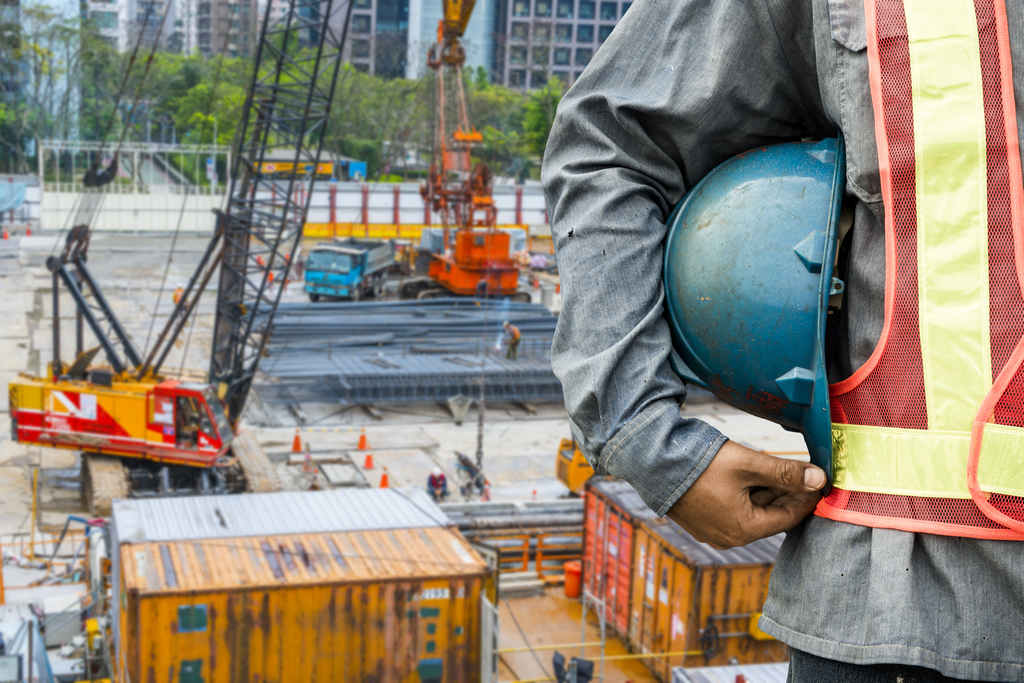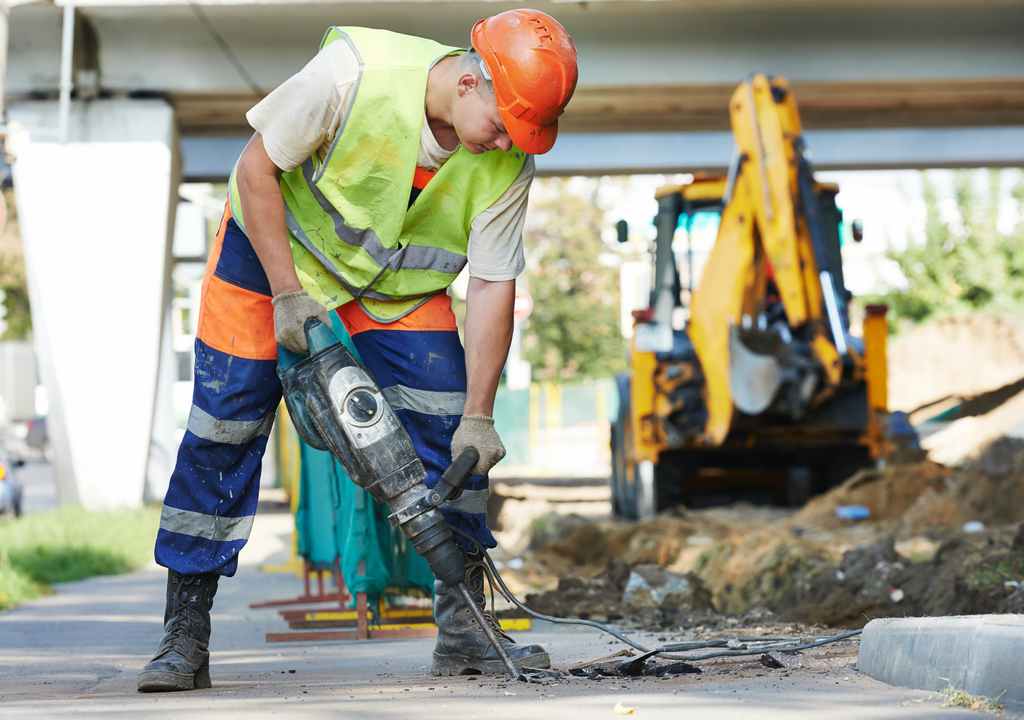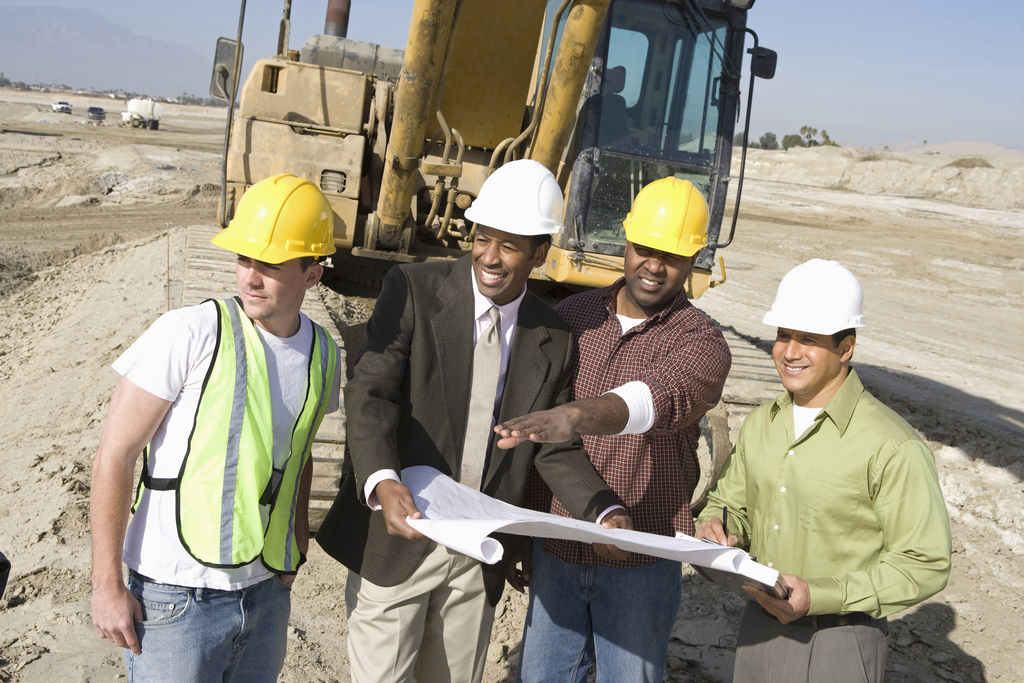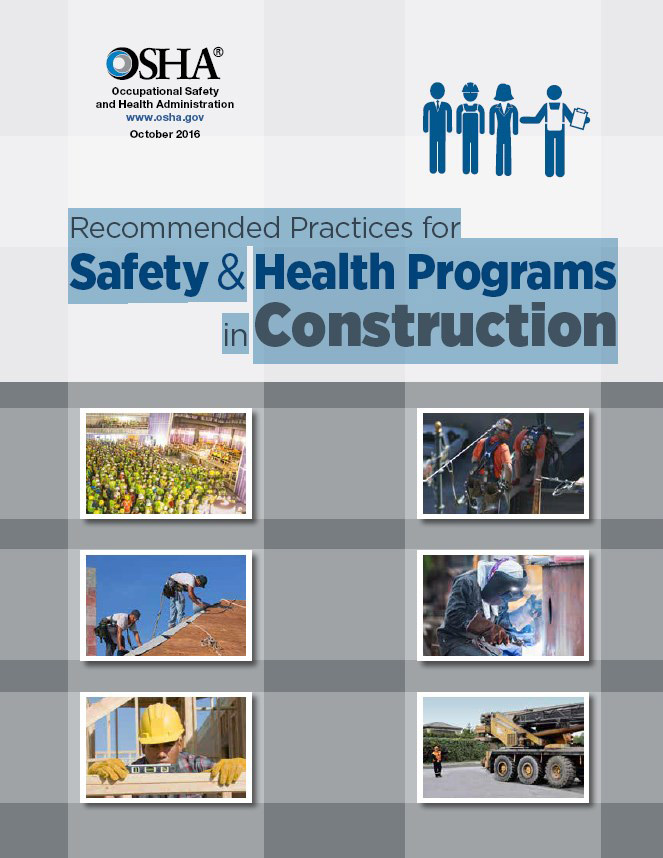National Construction Appreciation Week recognizes the dedicated, hardworking men and women in the industry who are instrumental in the development of our infrastructure and facilities.
National Construction Appreciation Week is the third week in September and aims to inspire a national conversation about construction and how it vital to American infrastructure and the economy.
Safety on a construction site goes far beyond reducing injuries. It’s about coming together to protect one another, and making sure everyone gets home safely every night.
 Image Source: Shutterstock
Image Source: Shutterstock Getting Involved
I Build America founded National Construction Appreciation Week to honor the dedicated men and women in the construction industry building America.
I Build America is a national movement focused on building pride in the construction industry, educating the public about the value of construction, and recruiting the next generation of construction professionals.
Here’s how you can get involved:
- Post your construction photos on social media using #ThanksForBuilding and #ConstructionAppreciationWeek
- Sharing official Construction Appreciation Week videos, stories and graphics on social media:
- Tell those you know in the industry you appreciate their work! It’s a tough job, and everyone deserves encouragement.
- Speak positively about the construction happening in your community. Remember, construction workers strive to make your life better!
- Share a positive construction story that affected your life.
Stickers, apparel, hats, and other products available at the I Build America Store.
Job Site Safety and Health Program
Establishing a safety and health program at your job site is one of the most effective ways of protecting your most valuable asset: your workers. Losing workers to injury or illness, even for a short time, can cause significant disruption and cost—to you as well as the workers and their families. It can also damage workplace morale, productivity, turnover, and reputation.
Construction work is hazardous work and includes many hazardous task and conditions such as working with height, excavation, noise, dust, power tools and equipment. The most common fatalities are caused by the fatal four: falls, being struck by an object, electrocutions, and being caught in between two objects.
Safety and health programs foster a proactive approach to “finding and fixing” job site hazards before they can cause injury or illness. Rather than reacting to an incident, management and workers collaborate to identify and solve issues before they occur. Employers will find that implementing recommended practices also brings other benefits. Safety and health programs help businesses:
- Prevent workplace injuries and illnesses
- Improve compliance with laws and regulations
- Reduce costs, including significant reductions in workers’ compensation premiums
- Engage workers
- Enhance their social responsibility goals
- Increase productivity and enhance overall business operations
 Image Source: Shutterstock
Image Source: Shutterstock
National Construction Safety Week
Every year, many construction companies host Safety Week events as a way to refocus and re-energize our commitment to eliminating injuries on jobsites. Help bring Safety Week to life in your company! Download a Safety Week Planning Playbook and get started planning Safety Week Activities.
It is recommended that at least you should cover the most common mechanical industry incidents that often result in injury:
- Fall Prevention and Protection
- Ladder Safety
- Eye Injury Prevention
- Safe Handling of Materials
- Pressure Testing Safety
Construction Safety Education and Training
Construction safety education and training are important tools for informing workers and managers about hazards and controls so they can work more safely and be more productive. Another role of education and training, however, is to provide workers and managers with a greater understanding of the safety and health program itself, so that they can contribute to its development and implementation.
- Required by some states and companies in order to start employment.
- DOL Plastic Card Shipped Within 2 Weeks.
- Reg. Price: 10hr: $89 - 30hr: $189
- Enter Promo Code "osha15off" at Checkout
Education and training provides employers (owners and executives), managers, supervisors, and workers with:
- Knowledge and skills needed to do their work safely and avoid creating hazards that could place themselves or others at risk.
- Awareness and understanding of hazards and how to identify, report, and control them.
- Specialized training, when their work involves unique hazards.
Additional training may be needed depending on the roles assigned to employers or individual managers, supervisors, and workers. For example, employers, managers, and supervisors may need specific training to ensure that they can fulfill their roles in providing leadership, direction, and resources for the safety and health program. Workers assigned specific roles in the program (e.g., incident investigation team members) may need training to ensure their full participation in those functions.
Effective training and education can be provided outside a formal classroom setting. Peer-to-peer training, on-the-job training, daily toolbox talks, and worksite demonstrations can be effective in conveying safety concepts, ensuring understanding of hazards and their controls, and promoting good work practices.
 Image Source: Shutterstock
Image Source: Shutterstock How to Enhance a Safety Training Program
- Provide program awareness training
Managers, supervisors, and workers all need to understand the program’s structure, plans, and procedures. Having this knowledge ensures that everyone can fully participate in developing and implementing the program. - Train employers, managers, and supervisors on their roles in the program
Employers, managers, and supervisors are responsible for workers’ safety, yet sometimes have little training on safety-related concepts and techniques. They need specific training that allows them to fulfill their leadership roles in the program. - Train workers on their specific roles in the safety and health program
Additional training may be needed to ensure that workers can incorporate safety and health responsibilities into their daily routines and activities. - Train workers on hazard identification and controls
Providing workers with an understanding of hazard recognition and control, and actively involving them in the process, can help to eliminate hazards before an incident occurs. Employers are required to instruct each employee in the recognition and avoidance of unsafe conditions and the regulations applicable to his or her work environment to control or eliminate any hazards or other exposure to illness or injury [29 C.F.R. 1926.21(b)(2)]. As a starting point, employers may consider providing the OSHA 10-hour course for construction or a similar course to be supplemented by orientation training and toolbox talks to cover hazards on each specific site.
More Information:
OSHA Publication – Recommended Practices for Safety & Health Programs in Construction (PDF)

